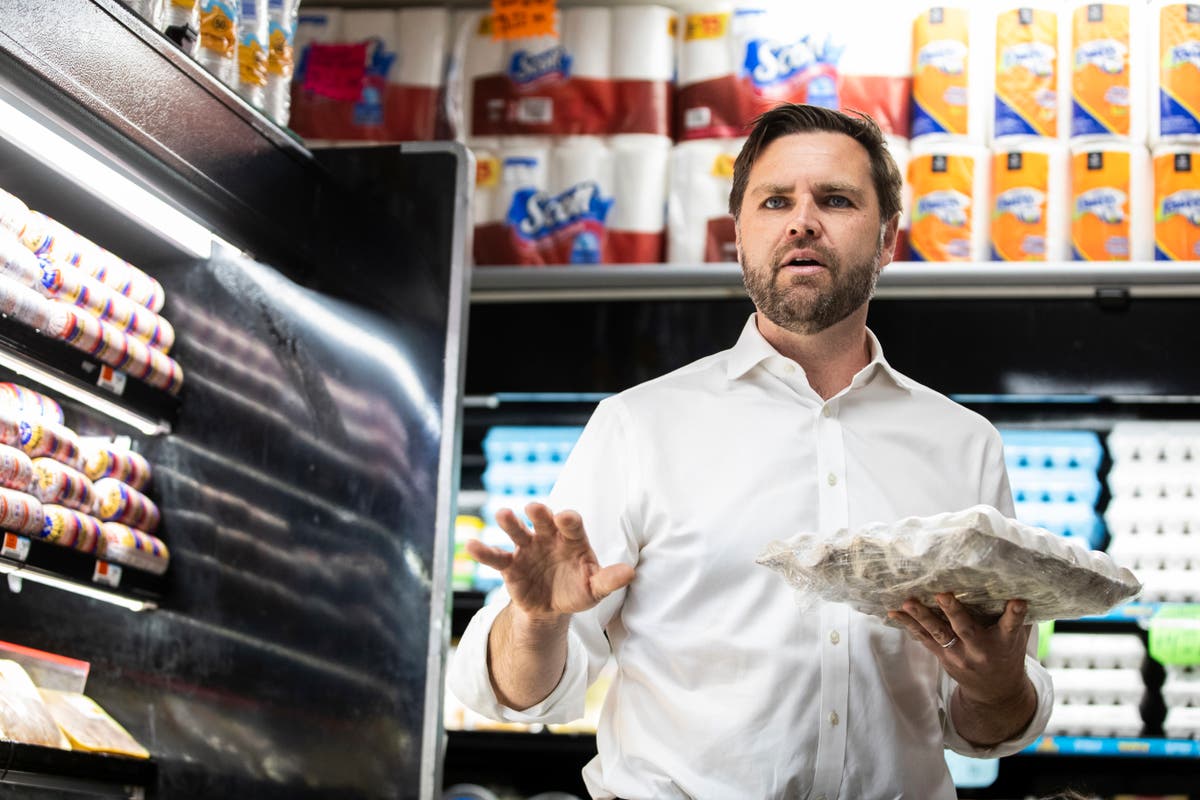JD Vance was roundly mocked online over a trip to the supermarket where he bemoaned the steep price of eggs — and botched the photo opp.
The Republican vice presidential nominee stopped by a supermarket in Reading, Pennsylvania, with his sons over the weekend to illustrate how grocery prices have been impacted by “Kamala Harris’s policies” when he claimed a dozen eggs cost $4.
The problem? When footage of the visit emerged, Vance was quickly called out by viewers who spotted the price tag of a dozen eggs behind him was actually $2.99.
🗳️ Register to vote: https://vote.gov/



Yes, eggs should be from small farms with 12 chickens max each, that should solve everything, quality control, diseases and the high prices on eggs.
Same with everything else, factories make shitty products, you should rather order from a craftsman.
/s
PS:
Oh yes BTW, AFAIK the flu outbreaks started in nature, not on farms.
Zoonotic diseases require frequent contact with large amounts of animals with large amounts of workers to have enough opportunity to make the difficult cross-species jump, so yes, factory farming is 100% the problem and giving both the animals and the people caring for them more space and making sure the workers have the time to do things right would make a huge difference. You’re making a reducto ad absurdum argument by intentionally using absurd quantities and time periods that are not required to accomplish this goal.
OK, how many chickens are required before it becomes an industrial production, and not just hobby level?
Is it less safe to have a few hundred than a dozen? The answer is obviously yes. So the problem claimed in the post I responded to, exist with everything above hobby level production.
So I stand by the argument as valid. And the post I responded to as naive.
On the other hand, I can get free range eggs cheaper than your factory made ones in the most expensive parts of the EU, and our population is greater than that of the US, we are feeding more people, yet I can safely eat them raw without the risk of salmonella.
Free range are only marginally better than cages at best.
US free range and EU free range are not the same by far.
In the US, free range poultry must:
In the EU:
And that’s in addition to different food safety standards that make most US poultry non-importable to the EU.
In Canada there’s free range and free run. Free run are the indoor bullshit ones, I bought them a couple of times and the yolks are the same piss-yellow as the cheapest factory eggs. Proper free range are worth the $8 or so a dozen imo, the colour and taste is so much better which must at least mean there are some standards
Yes there’s a huge difference, free range are definitely better in every way, but also more expensive.
They are also more healthy to eat, because they contain essential fatty acids that occur naturally in eggs, but is lost in cheap production with lower quality feed. Stress and lack of exercise are probably factors too.
The more healthy eggs to eat also taste better.
My mother raises hens and a dozen birds can actually make so many eggs that our entire family has trouble using them all. A bird lays on average one egg a day, and pasture-raised eggs are so rich as to be almost unpalatable to eat directly.
I don’t think every farm needs to have some strict limit like that, but more numerous, smaller, more localized farms would be better for everyone in almost every way. Better environmentally, more humane to the birds, people get fresher and higher quality eggs, and more people are employed. Also more limited damage from diseases, droughts, and so on.
Our current system isnt just bad because “factories bad.” It’s bad because it’s heavily centralized and top-down controlled. This is much cheaper to operate and funnels money towards the owner much better, but is so much worse in every way that local farms are better.
We’re making millions of birds suffer and getting shittier, more expensive product because of it so less than a dozen people (the real bad eggs) can stay filthy rich.
Either those farmers would make a lot less money, like barely being able to make a living, or the price of their products would have to be way higher than what we pay today. Like not just a few percent, but a factors higher.
And?
Do you really believe I don’t know that?
WTF? That’s bullshit.
Maybe you are confusing them with eggs from free reigning ducks, which IMO taste awful. But from chicken they are really really good.